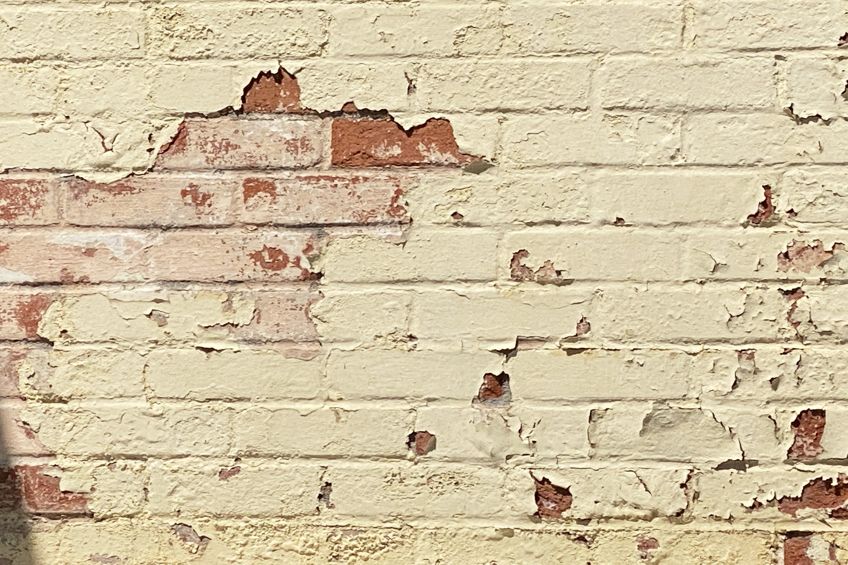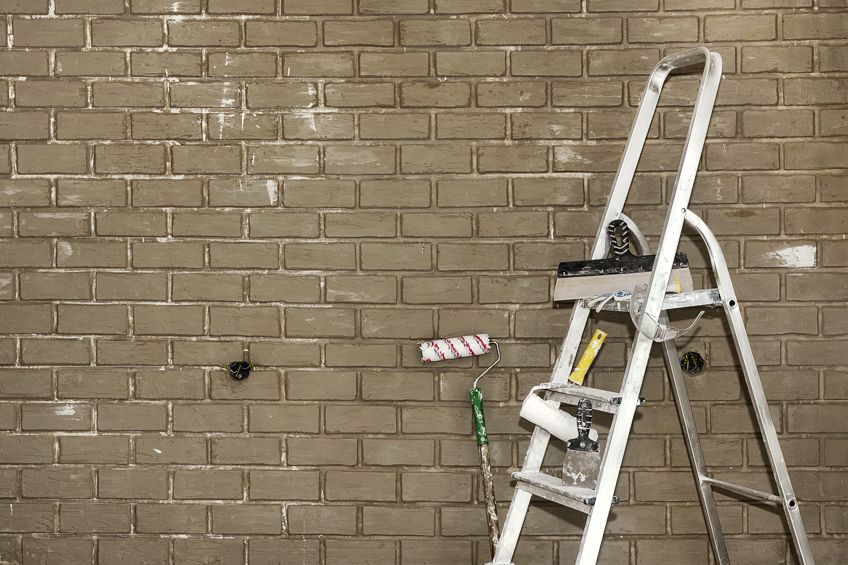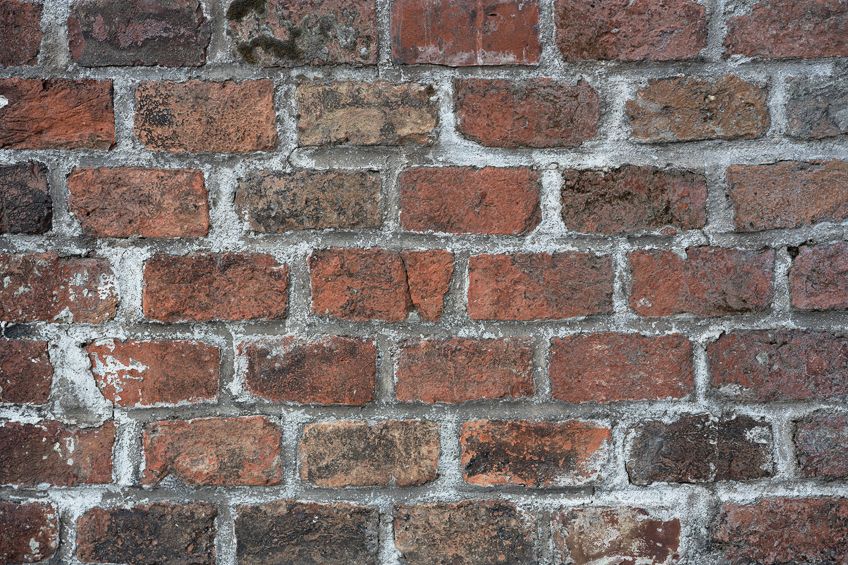How to Remove Paint From Brick – Stripping Paint From Brickwork
This post may contain affiliate links. We may earn a small commission from purchases made through them, at no additional cost to you. You help to support resin-expert.com
Removing paint from any surface can be a daunting task, perhaps it’s because it simply serves as a starting point for more work? Regardless, removing paint from brick can be even more challenging than doing so with most other surfaces. This can be a painfully long and challenging process if you have never done it before, therefore it’s no surprise that many people prefer hiring professionals to get the job done. However, we prefer to have a more positive attitude toward home improvement. This being said, let’s have a look at the best way to remove paint from brick, and how you can do so in the quickest and most effective way possible.
Why Would You Want to Remove Paint From Brick?
If you live in a brick home the chances are that it has seen some mileage in terms of coats of paint. You might not be happy with the color or the finish it has, so changing it might be something you intend to do. If you have ever painted a home before, you know that the process is labor-intensive and that you should prepare well in advance and the same goes for removing paint from a brick exterior (or interior).
So, why would you try removing paint from a brick exterior? Well, maybe you enjoy the look of an unpainted face brick exterior or maybe you’d like to remove the years of old paint from the surface to give your new color the exact finish and tone you envision for it. Another reason you might want to remove paint from brick is simply because of a bad paint job.
When the paint is incorrectly applied, applied without primer, or if the wrong type of paint is used, it can cause the coating to bubble up and peel away quite quickly, especially after an initial change in temperature. In these instances, you would probably like to replace or remove the paint from the brick before adding a new coat or replacing the paint, but you will need to know how to remove the coat before you crack on with a new one.
This can be tough considering what a rigid and unmoving material masonry is This being said, how does one go about removing paint from brick in the first place? Let’s have a look at how to remove paint from brick and as well as the tools you will need before you get started. We also have a post about how to paint brick properly.
There are various techniques you can implement when doing so too, so we’ll provide you with the best way to remove paint from brick, ensuring a balance between elbow grease and minimizing potential damage to your surfaces.
How to Remove Paint From Brick
Removing paint from brick exterior will require some considerable willpower and perseverance and you may even realize while you’re halfway through the job that you might have been better off hiring a professional. This does not mean that you should give up though and doing the proper assessments beforehand will ensure that you have a realistic understanding not only of the scope of the job but how much work your brick surface will need, regardless of whether you choose to leave it exposed or repaint it.
What You Will Need
- Brick and mortar paint stripper
- A paint scraper/ drywall knife
- An applicator for the paint stripper
- A tarp or covering for your floor surfaces
- A wire brush or steel wool
- Peeling tape for paint stripper
Prepare Your Work Area
Before you learn how to remove paint from brick you should probably ensure that your lawn, driveway, or other exterior landscaping has been covered. The problem with removing paint from brick exterior is that once the paint has been removed the particles can potentially damage the surfaces they come into contact with, which could affect the grass, soil, or concrete.
Laying down a covering also means that clean-up time is cut in half once you have done the deed. The last thing you want is having to sweep up loose bits of paint once it has been scraped off the wall, especially after a hard day of removing paint.
Once your work area has been prepared, it’s time for you to get your tools ready.
Prepare Your Tools
As we mentioned previously, there are a number of ways you can go about removing paint from brick – one of the less recommended ways of doing so is using a sandblaster. Although it will work a lot faster compared to applying a paint stripper, it could actually damage the face of the brick, particularly if you don’t know what condition the bricks are in underneath the paint.
Preparing a sandblaster is self-self-explanatory (they come with instructions) and since we don’t recommend it (in your best interest), here’s how you should set up your tools: We recommend using a masonry paint stripper, and since these typically come with a special tool you can use to apply the stripper paste, you should leave those on the side of your dominant hand so that you are able to apply it to the wall and scoop up some more without having to move about too much. Next, get your trowel or scraper and do the same with them.
Once your tools are all in order, ensure that you have the appropriate personal protective gear with which to use the masonry paint stripper. Keep in mind that any paint stripper is extremely toxic and can potentially cause serious discomfort if inhaled or it comes into contact with your skin and eyes. Using eye protection, gloves, and a mask the covers both your eyes and nose are highly recommended.
Apply Your Paint Stripper
Before you begin applying the paint stripper, you should ensure that your surface is as clean as possible. Just as if you were painting the surface for the first time, remove any loose pieces of paint from the surface. Ensure that you get off as much as possible so it doesn’t fall off when you are applying the stripper, this makes things a lot easier for you in the long run and might even give you a good idea of the condition of the bricks underneath the paint.
Once you are sure that all of the loose pieces have been removed, it’s time to grab your chosen applicator and paint stripper. Brick paint stripper is usually pretty thick, so ensure that you pick up enough and that your applicator is conducive to covering a large surface, and once you have some start applying it to the surface in question.
Ensure that you apply the stripper evenly and don’t forget to get into the little nooks on and between the mortar of the wall – the last thing you want is paint sticking around after you have started peeling it off because you missed a spot.
The manufacturer should have a recommended thickness for the stripper, so apply it coat by coat until the recommended thickness has been reached. Remember that the stripper will have to seep deep into the brick for it to be even remotely effective so being conservative with it is not really an option. Allow the stripper to set into the brick and mortar for a few minutes before moving on to the next step in the process.
Apply Your Peeling Strips
It’s time to start applying your peeling strips to your freshly applied paint stripper. The manufacturer should have stipulated the amount of time on the product’s container, detailing when you should begin applying your peeling strips. To avoid complications, try to purchase stripper and peeling strips of the same brand so there is some uniformity in the process.
Peeling strips are typically made out of paper materials, but these days, there are strips made out of other materials too, so it would do you well to check which is best suited to your particular application. Once you have your peeling strips ready, you can begin applying them to the wall in question, making sure that the strips overlap with one another so that no brick or mortar is exposed underneath.
Take special care to ensure that the strips are in contact with the gaps in the wall housing the mortar as well, or you’ll end up having to repeat the process again, and we’d prefer you get it done the first time around.
Once you have your targeted area of the wall covered in peeling strips, it’s time to sit back and let it work – this process can take up to 24 hours depending on what the manufacturer’s recommended time is. You can use this time to prepare other surfaces if you are working with multiple walls or prepare the rest of the wall if doing it section by section.
Remove Your Peeling Strips
Stripping paint from brickwork is a labor-intensive process, as you have probably gathered by now. Therefore, when removing paint from brick it’s important not to rush. Once you have waited for the manufacturer’s recommended time period you can begin peeling away the strips you have applied.
If you need to get some leverage, use a dull knife to raise an edge of the strip so that you have a good grip. Ensure that you have those gloves on, as strippers can be harmful to your skin even when set.
Peel the strips away slowly and evenly as far as possible – if you remove the strips too quickly, the paint will stay behind and you will have to remove it manually with a wire brush or scraper, which sort of defeats the point of all the effort you have put in thus far.
Peel them away carefully and methodically while ensuring that the pieces that have overlapped don’t tear away from one another in the process, this being said, choose a section to remove and stick to it until you have peeled away the ensure section from end to end.
Focusing on a particular section reduces the scope of your focus and will ensure that the sheer scale of the task does not overwhelm you. Repeat this process until all of the strips have been removed from the wall. Inevitably, when stripping paint from brickwork there will be some paint that simply refuses to come off with paint stripper and peeling strips alone, when you encounter these areas simply give them a once over with a wire brush or trowel.
At this point in the process, you should have a wall that’s around 95% clear of paint and stripper.
Assess Your Surface and Dispose of Peeling Strips
We were not joking when we mentioned that removing paint from brick is no small task, but at the end of a hard day’s work, it does leave one with a great sense of accomplishment. Now that the hard part is out of the way, you should clean up the peeling strips and excess bits of paint laying on the tarp you laid down. Remember to use gloves when collecting these pieces and rolling up the tarp as these pieces can still be harmful to you (as we mentioned previously).
Ensure that you follow the manufacturer’s recommendation when disposing of the stripper-soaked paint as some substances used in paint stripper can be flammable. Once the tape has been disposed of you should give your surfaces as assessment, this is due to some strippers needing to be neutralized once the strips have been removed from the wall.
If your stripper comes with a neutralizing agent ensure that you use it as soon as possible to ensure that it does not eat away your freshly cleared brick surface, this is especially important if you intend to repaint said surface in the future. If your stripper does not come with a neutralizing agent check the packaging for the time recommended by the manufacturers before the surface can be touched and/or painted. Lastly, ensure that the time of year you choose to strip your surface is a warm one, paint stripper is negatively affected by cold ambient temperatures.
Now that you know the best way to remove paint from brick, how to apply paint stripper to a brick surface, how to prepare the said surface before applying paint stripper, and how to safely remove your peeling strips from the wall, it’s time for you to go out and put your newfound knowledge to the test. Remember to lay down tarp before you begin applying the stripper, always wear the appropriate personal protective gear, and exercise patience to the highest degree possible when removing peeling strips!
Frequently Asked Questions
Can Paint Be Removed From Exterior Brick?
Paint can be removed from brick. The ease of the task does vary according to the state the brick and mortar of the surface are in at the time. Removing paint from brick can be a time-consuming and labor-intensive process whether you are a professional or a novice as no two walls are ever the same, and it requires considerable patience and proficiency in technique.
How Hard Is It to Remove Paint From Brick?
Removing paint from brick is possible although most people simply paint over an existing coating due to the time-consuming and labor-intensive nature of removing paint from brick. Brick and mortar have tiny recesses that paint tends to seep into, therefore if your intention is to get a clean face brick aesthetic you will have your work cut out for you.
Can You Pressure Wash Paint Off Brick?
It is possible to both sandblast and pressure wash paint of brick if sufficient viscosity is used. The problem with both of these methods is that you can’t really determine whether it will damage the brick surface beforehand. If the surface is still fairly new and you know what type of brick you will be working with, these methods can be less time-consuming and labor-intensive compared to using paint stripper and peeling tape.




